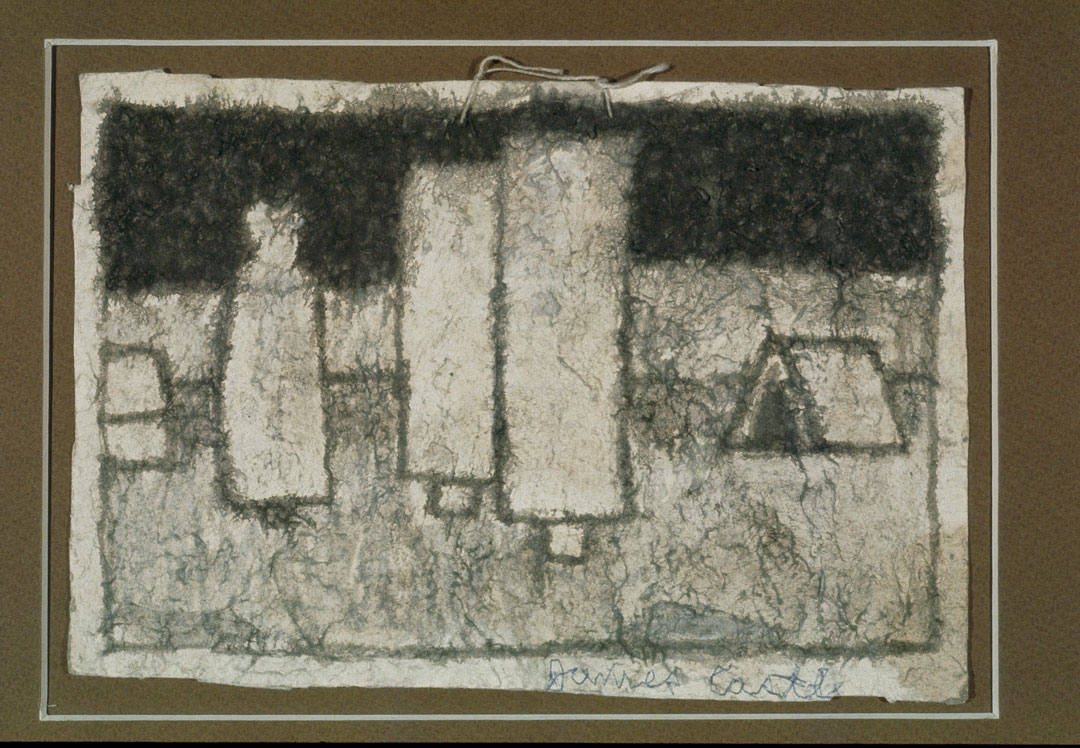Object of the Week: Two Totems with Man No. 56

Artist James Castle was born in Garden Valley, Idaho in 1899. The fifth of seven children, he was born deaf, and spent his whole life unable to speak, read, write, or sign. Castle started drawing at the age of six, leading to a lifetime of creativity with art serving as his own personal form of communication.
In 1931, Castle moved with his family to Boise, Idaho, where Castle remained until his death in 1977. There was much that was unconventional about the artist: largely self-taught, his primary drawing materials included soot from the family woodstove, mixed with his saliva, which he would apply to an upcycled piece of cardboard (e.g. a milk carton) with a found utensil, oftentimes a sharpened stick. His drawings were heavily influenced by the environment he lived in, and were sometimes a mix of highly realistic and abstract imagery. He also drew many scenes from the family’s previous homes, which are believed to be recreated from memory.
Though Castle was seemingly content to produce artworks for himself and his family, in 1951 his nephew shared some of the drawings with his art professors in Oregon, who immediately expressed interest. Thus began a new stage of Castle’s life, in which Castle’s work continuously garnered more attention, culminating in an exhibition of his works at the Boise Art Museum, the highest honor he achieved during his lifetime.
Today Castle is considered one of the most recognized self-taught artists. Two Totems with Man No. 56, in SAM’s collection, was produced using stove soot and saliva to make charcoal, which was then applied using a matchstick to a found salvaged piece of cardboard. As with many of the artist’s pieces, it has a knotted string hanger. A more abstract example of Castle’s oeuvre, the meaning behind the totems in Two Totems continues to evade scholars, although it is a motif Castle returned to often. Even so, with this and other works, we are able to gain valuable insight into how Castle viewed the world around him.
– Hayley Makinster, SAM Curatorial Intern